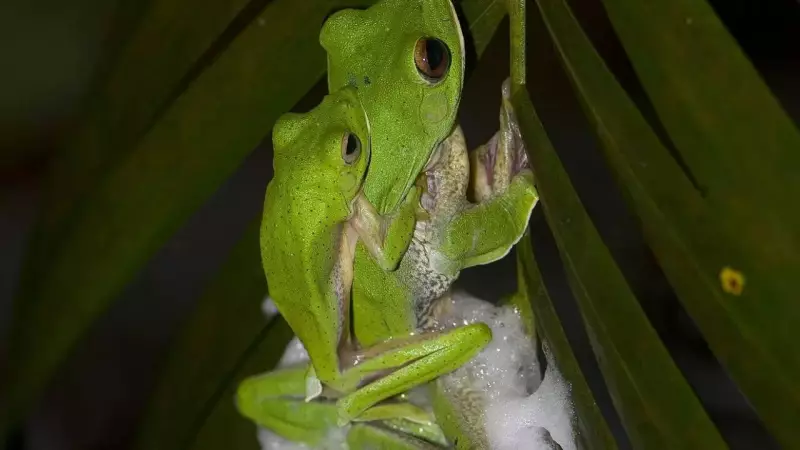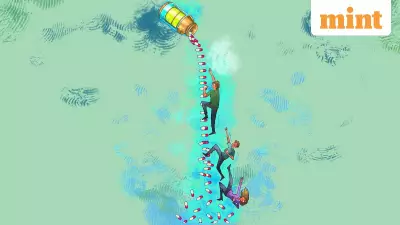
High in the lush, mist-covered forests of India's Western Ghats resides an extraordinary creature that seems to belong in a magical storybook. The Malabar gliding frog, with its vibrant green coloration, showcases remarkable behaviors that set it apart from other amphibians, particularly through its unique breeding methods and incredible gliding capabilities.
The Aerial Architect: Building Foam Nests in Treetops
When monsoon showers drench the Western Ghats, creating perfect humid conditions for breeding, the Malabar gliding frog begins one of nature's most fascinating parenting rituals. Unlike most frog species that deposit their eggs directly in water, this innovative amphibian takes to the trees to secure its offspring's future.
The female carefully selects a tree branch or leaf positioned directly above a pond or slow-moving stream. The male then climbs onto her back in a mating embrace known as amplexus. While maintaining this position, the male begins creating a white, frothy foam using special fluids produced during breeding.
This remarkable foam nest can grow to approximately three inches in diameter, serving as a soft, protective cushion for the developing embryos. Inside this natural incubator, the female deposits up to 200 eggs, which the male simultaneously fertilizes. The foam provides crucial protection from predators, dehydration, and harsh sunlight while keeping the interior moist and secure.
From Treetop to Water: The Ingenious Life Cycle
After several days of development, the eggs begin hatching into tiny tadpoles. This is where nature's engineering becomes truly astonishing. As the tadpoles emerge from their eggs, they simply drop out of the foam nest and fall safely into the water below.
The nest's strategic positioning ensures that gravity delivers the hatchlings directly into their aquatic nursery without requiring any parental assistance. Once in the water, the tadpoles follow the conventional frog development path, feeding on algae and gradually transforming into miniature adults with legs while losing their tails.
This beautifully coordinated process offers multiple survival advantages:
- Enhanced protection from ground-based predators
- Reduced risk of eggs drying out in direct sunlight
- Safe and automatic transition from nest to aquatic environment
This efficient survival strategy has evolved over thousands of years, demonstrating nature's incredible ability to adapt to environmental challenges.
Gliding Through the Forest Canopy
The Malabar gliding frog's remarkable abilities extend beyond its breeding behavior. The amphibian possesses an astonishing capacity to glide between trees using the webbing between its toes as miniature parachutes. This aerial movement allows the frog to navigate the forest canopy with surprising grace and efficiency.
During gliding, the frog stretches the webbing between its toes to create a larger surface area, enabling controlled descent from higher branches to lower ones. This capability not only helps in escaping predators but also in efficiently moving through its treetop habitat.
Conservation Significance and Environmental Role
The Malabar gliding frog serves as more than just a fascinating subject for nature enthusiasts. Frogs function as important environmental indicators, with their presence signaling clean water sources and balanced ecosystems. Unfortunately, like many species in the Western Ghats, these remarkable amphibians face threats from deforestation, habitat destruction, and pollution.
Protecting the Malabar gliding frog means preserving entire ecosystems, including the rivers, forests, insects, and plant life that depend on these habitats. The frog's unique parenting strategies, aerial navigation skills, and specialized breeding behavior provide valuable insights into how animals adapt to survive in competitive environments.
When monsoon clouds gather over southern India's forests, remember that high in the treetops, a small green architect is creating secure homes using foam, patience, and incredible instinct. This remarkable species continues to demonstrate that nature's solutions to survival challenges can be as creative as they are effective.





